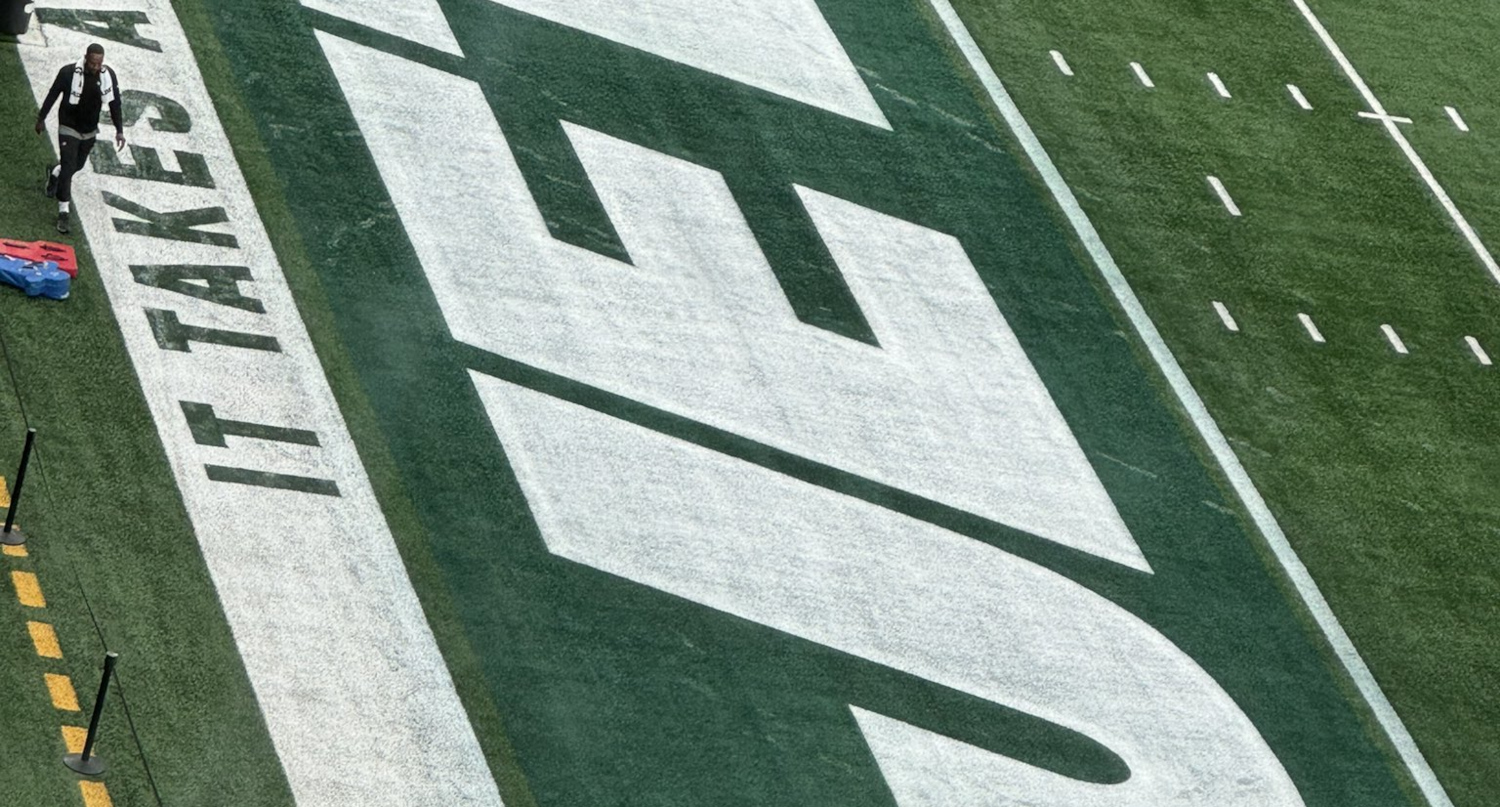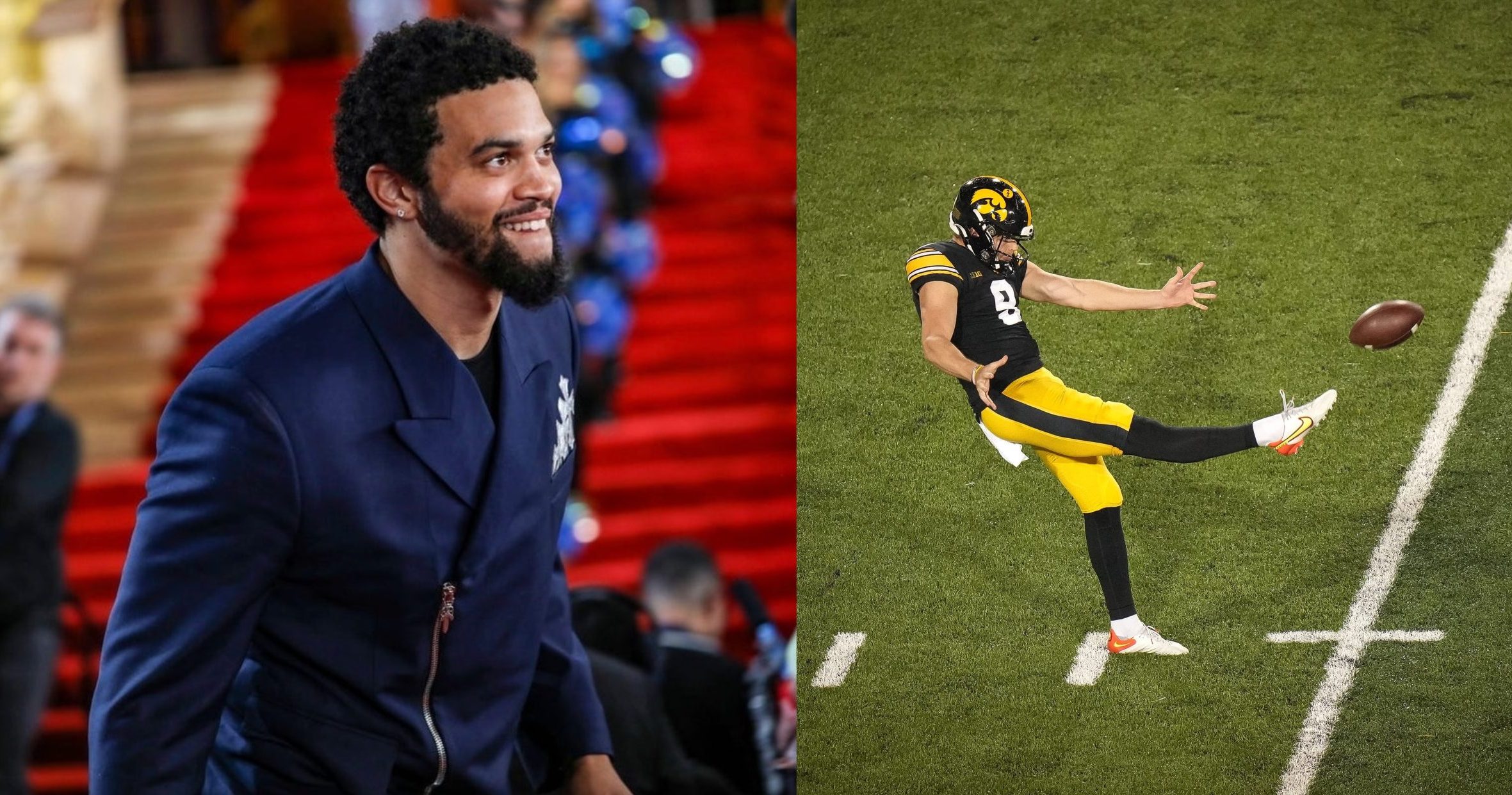While extra points have become more nerve-racking since they were moved back to 33 yards in 2015, NFL kickers remain virtually automatic with them, especially if there’s no adverse weather. Before 2015, the kick came from only 20 yards out and was even more automatic. Even bad kickers seldom missed an extra point.
That said, PAT misses did happen. And while most of those could likely be attributed to bad weather, a bad snap or hold, a block or simply a bad kicker, there were occasional exceptions. On Dec. 21, 2003, the New Orleans Saints found that out the hard way.
Making matters even worse? The play before it was one of the most exciting in the history of the NFL. And on the 20-year anniversary of the River City Relay, we look back at not just the exciting play but the game that was played before it and the stunning kick that came after.
Background
Through the first 14 games of the 2003 season, the Saints were essentially the perfect picture of mediocrity. They were 7-7 and had nine more total points than their opponents. But there was some good news. New Orleans was still alive in the playoff race. The Saints needed to win both of their remaining games to have any chance. But coming off of a 45-7 win, momentum seemed to be on their side.
The first of those games was against the Jacksonville Jaguars. Sure, a dome team going on the road in December is tough, but Jacksonville is about as desirable an outdoor venue as the NFL has to offer a dome team in that situation. Making matters better for the Saints, the Jaguars were playing strictly for pride. They were 4-10 on the season and out of playoff contention.
Despite that, Jacksonville generally controlled the game. New Orleans led 3-0 after the first quarter but the Jags carried a 17-10 lead into the locker room at halftime and a 20-13 lead going into the fourth quarter. That’s where the score remained for nearly the rest of the game.
The good news for the Saints is that they had the ball in the final seconds. The bad news? They were on their own 25-yard line with just seven seconds remaining. New Orleans had one play to go 75 yards.
The relay
Lateral plays fail far more often than not, especially when they need to travel 75 yards. Teams can often keep the plays alive for a while. But as often as not, the play only stays alive because the offensive players continue to move back. Eventually, a defender will get a hand on a lateral, a lineman will get his hands on the ball or there will be a forward lateral, bringing the play to an end. At least, that’s how it usually happens.
Nothing like that happened here.
Quarterback Aaron Brooks passed the ball to Donté Stallworth, who caught it at midfield. Jacksonville’s Fernando Bryant and Deke Cooper were both near Stallworth, but he managed to escape both. Cutting in, Stallworth got away from linebacker Akin Ayodele but quickly found himself face-to-face with another Jaguars defender, Rashean Mathis. With that, Stallworth flipped the ball to Michael Lewis.
Lewis didn’t have a lot of room to operate but did manage to get the ball into the hands of Deuce McAllister. McCallister also didn’t have much space and was quickly cornered. But as he was on his way down, McCallister tossed the ball to teammate Jerome Pathon.
As Lewis and McCallister were within arms reach of each other at the time of their exchange, most of the Jacksonville defense was concentrated on the offense’s left side of the field. McCallister’s toss not only got the ball away from that cluster of humanity, but hit Pathon in perfect stride.
There was one defender with a chance to tackle Pathon but the Saints had a tremendous advantage with Brooks, a mobile quarterback who had sprinted down the field. Brooks’ block on Hugh Douglas sprung Pathon, who sprinted to the end zone for the touchdown.
No. 55: The “River City Relay” (Dec. 21, 2003) #NFL100
📺: NFL 100 Greatest Plays on @NFLNetwork pic.twitter.com/knAA3R57qy
— NFL (@NFL) September 14, 2019
Review and decision
New Orleans coach Jim Haslett had to decide if he would roll the dice and go for a two-point conversion or take the extra point and play for overtime. And he had a while to make this decision because there was a lengthy review process.
Most of the play was undeniably clean. McCallister was on his way down as he lateraled the ball to Pathon, but he had clearly gotten rid of the ball before getting tackled. The lateral from Stallworth to Lewis, though, was close. Despite that, roughly three-and-a-half minutes after Pathon crossed the goal line, the touchdown was confirmed.
And with that, Haslett sent the field goal team out. Sure, overtime is risky and it was even riskier in 2003, as it was true sudden death. But a two-point conversion was also a risk. There was no risk in the extra point. Kicker John Carney had struggled some coming into the game, but only from longer distances. On PATs, he was automatic.
Considering how good Carney was and that his defense had shut Jacksonville out for the entire fourth quarter, there was no disputing Haslett’s choice to send the game into overtime. It was the logical and simply obvious choice.
The kick
The improbable touchdown sent the Saints and their fans into a state of euphoria. While some of that might have simmered during the lengthy review process, news that the touchdown would stand again lifted the spirits of New Orleans’ team and its supporters. But about a minute after the touchdown was upheld, the euphoria was gone — or at least had shifted to the other sideline.
Carney’s extra point attempt missed and wasn’t particularly close. The ball immediately shot off to his right and missed by about as much distance as a 20-yard kick can miss.
Kickers just want to watch the world burn #NeverForget pic.twitter.com/nEIEZnrpCm
— NFL Retweet (@NFLRT) July 15, 2016
It’s hard to imagine that Carney ever kicked a ball worse than this one. And it’s hard to imagine a kick with a more shocking result.
Make no mistake, Gary Anderson’s NFC Championship Game miss five years earlier was shocking. He hadn’t missed a kick all year and it was in a dome. Still, that kick was from 39 yards. Yes, that’s a chip shot for any NFL kicker but those will occasionally go awry. That was on a bigger stage, so its impact certainly outweighed Carney’s miss. But Carney’s miss was far more inexplicable.
Carney was perfect on PATs to that point of the season. In fact, he hadn’t missed a PAT in nearly four years, with his most recent coming in the final game of the 1999 season. Not only that, but aside from that miss, he hadn’t missed a kick — PAT or field goal — from inside of 30 yards since the beginning of the 1999 season. If there was a false start or even two, there was still no reason to worry.
Going through their careers, we might find Michael Jordan or LeBron James missing an uncontested layup. We might see Willie Mays misplay a routine fly ball or Tiger Woods miss a two-foot putt. Carney in 2003 on extra points and short kicks was about that level of automatic.
Aftermath
The Saints were eliminated but did salvage a .500 season the following week with a 13-7 win over the Dallas Cowboys. Jacksonville, meanwhile, finished its season with a 21-14 loss to the Atlanta Falcons.
Perhaps Carney’s missed field goal was an omen for what would come later that season. The Carolina Panthers met the New England Patriots in Super Bowl XXXVIII. Moments after the Panthers scored a game-tying touchdown late in the fourth quarter, John Kasay, another star kicker from Carney’s era, kicked the ensuing kickoff out of bounds. That gave New England great field position for what ended up being a game-winning drive.
Carney remained in New Orleans for another three seasons. He was released following the 2007 season and bounced around the league for the next few years. Interestingly enough, his first stop would be in Jacksonville.
After stints with the Jaguars, Kansas City Chiefs, and New York Giants, Carney returned to New Orleans and started the 2009 season as the kicker, with regular kicker Garrett Hartley suspended. He returned to the field one year later as Hartley struggled, but only briefly. Carney was released later in the 2010 season and never kicked in the NFL again.
[Photo Credit: Fox]







